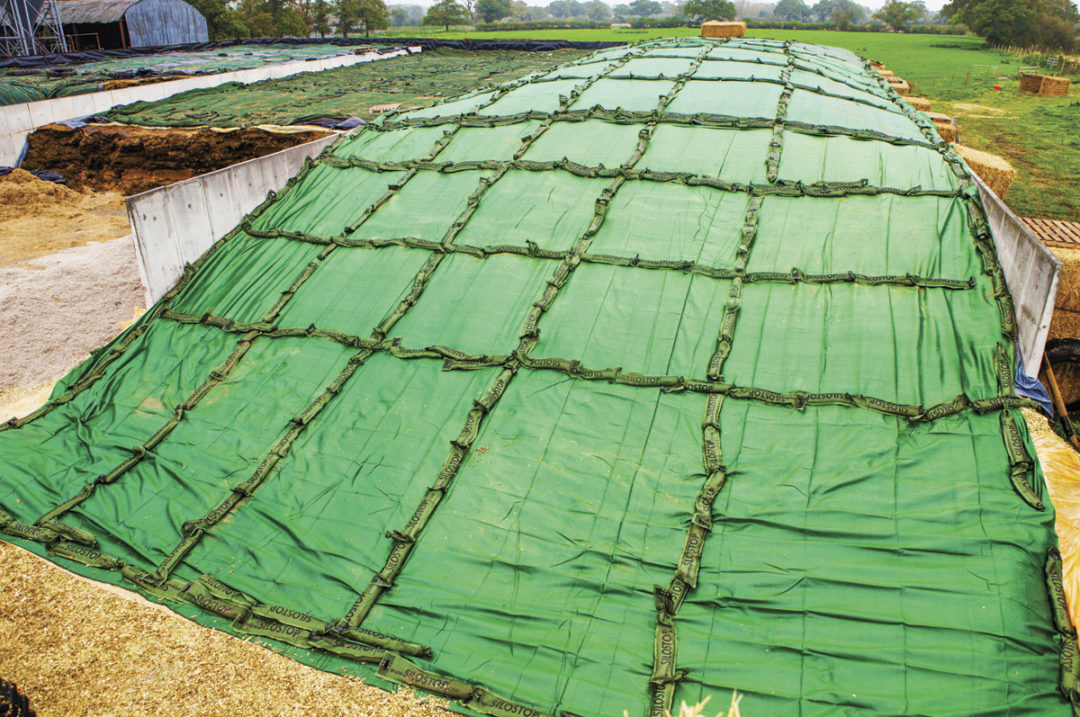In 2022, the United Nations (U.N.) embarked on a mission to end plastic pollution by drafting a legally binding global agreement. This agreement is intended to drive a circular plastics economy, which would reduce pollution from single-use plastics by prolonging the life cycle of plastics in circulation. Scientists believe that a circular economy could be attainable by the year 2050.
In this article, we will explore some of the solutions for reducing plastic waste and discuss opportunities for silage producers to reduce their carbon footprint. Plastic sheets used to cover silage bunkers are often discarded after one use, and with many sheets not being recyclable, are then added to landfills or in some instances burned. As plastic takes anywhere between 20 and 500 years to decompose, a sustainable solution for silage producers would go a long way toward making a positive impact on the environment.
Of the 1 billion pounds of plastic used annually in the agriculture industry, only 10% of that plastic is estimated to be recycled. According to the Wisconsin Department of Natural Resources, approximately 15 to 20 pounds of all types of ag plastic a year are used per dairy cow.
Silage, a type of forage produced by fermenting plant matter and then fed to livestock, is a crucial component of the agriculture industry; however, the use of plastic sheets to cover bunkers poses a negative impact on the environment when not recycled. Often in the U.S., plastic sheets are single-use and are made of non-recyclable materials. This poses a dilemma for silage producers who desire solutions for reducing their carbon footprint but require plastic to produce silage to feed their livestock.
One way for silage producers to reduce their carbon footprint is to commit to using a silage covering system that requires less overall plastic use.
“We know that for every silage bunker that converts to a system that uses less plastic, 250 kilograms of harmful carbon dioxide emissions are eliminated,” says Tim Brewer, CEO of Silostop Agri.
To protect silage piles from the damaging UV rays of the sun, from birds and other wildlife, and from inclement weather such as hail, many producers turn to single-use 5-mil black and white (BW) plastic tarps on top of an oxygen barrier underlay to cover their silage. While these tarps can be effective as physical barriers, they often end up in landfills. As an alternative, investing in a reusable anti-UV cover for silage piles will not only reduce the total amount of plastic used but will also reduce total financial investment in covers in the long term. In addition, a reusable anti-UV cover is stronger and more durable than a 5-mil BW plastic tarp. Reusable covers are made from high-density polyethylene (HDPE), a type of plastic that can last for many years and can be folded up and stored when not in use.
“There is a tremendous amount of time, money, blood, sweat and sometimes tears when it comes to producing high-quality feed for livestock. It just makes sense to protect that investment,” says Chris Wacek-Driver, an independent consultant, owner and founder of Forage Innovations LLC. “Utilizing a reusable anti-UV cover is one sustainable way to protect that investment.”
Another way to reduce plastic waste during silage production is to use silage sheets that are fully recyclable. With fully recyclable sheets, silage producers have the opportunity to recycle their plastic as opposed to disposing of them in ways that will end up in landfills. It is not always the easiest to ensure that these sheets make it to a recycling center; however, using a product that is fully recyclable allows for the silage producer to have that option.
A recycling initiative that was introduced in the United Kingdom includes the recycling of their plastic sheets to be reused to make plastic picnic tables. This process not only ensures that plastic does not end up in landfills, but ensures that plastic that would otherwise be used for these tables is saved. Initiatives like this help to drive the circular plastics economy.
Sustainability practices are becoming increasingly popular in the agricultural industry. As countries continue to pledge the importance of ending plastic pollution, having a plan that includes recyclable and reusable materials will be vital moving forward. By implementing sustainability practices in silage production, silage producers can reduce their carbon footprint while also protecting their bottom line. Through prioritizing sustainability, farmers can not only contribute to a healthier planet but also build a more resilient and profitable future for their businesses.
Not only can silage producers make an impact through sustainable efforts, but they can create better-quality silage that offers better nutrition options for livestock. The most critical factor in creating high-quality silage is creating a strong oxygen barrier. Poor oxygen protection of silage results in higher dry matter (DM) losses due to shrinkage, lower sugar and starch levels, and increased pH, mold and mycotoxin growth. A proper covering system can make a big impact on a farmer’s bottom line by decreasing the amount of labor needed to remove damaged silage, improving animal health and adding days of aerobic stability.
Typical silage loss can run up to 20%. Using a product that is environmentally friendly and that prevents oxygen ingress cuts that loss in half.
“Not all silage coverings are created equal,” concludes Driver. “You put a Porsche in the garage but forage worth millions under plastic and tires. It is tempting to look at that final pile, maybe breathe a sigh of relief or satisfaction, and feel the biggest part of the work is done. Yet, covering decisions and techniques are just as important.”










